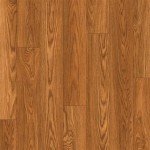Laminate Wood Flooring Thickness: An Essential Guide
Laminate wood flooring has gained immense popularity as a cost-effective and durable alternative to traditional hardwood floors. One crucial factor that determines the durability and performance of laminate flooring is its thickness. The thickness of laminate flooring is measured in millimeters (mm), and it typically ranges from 6mm to 12mm.
Understanding the different laminate wood flooring thicknesses and their respective benefits will help you make an informed decision for your home. Let's delve into the essential aspects of laminate wood flooring thickness:
1. Durability and Wear Resistance
The thickness of laminate flooring plays a significant role in its durability and wear resistance. Thicker laminate flooring (10mm or 12mm) is more resilient to everyday wear and tear, such as foot traffic, furniture movement, and impacts. It is particularly suitable for high-traffic areas like living rooms, hallways, and kitchens.
2. Stability and Structural Integrity
Thicker laminate flooring offers better stability and structural integrity. It is less prone to bending or buckling under heavy loads or in areas with high moisture levels. Thicker laminates are also more resistant to warping and can withstand temperature fluctuations better than thinner laminates.
3. Noise Reduction
Laminate flooring with a thicker underlayment provides better noise reduction. Thicker underlayments absorb sound, reducing the impact and reverberation of footsteps. This is an important consideration if you live in an apartment or have sensitive neighbors.
4. Appearance and Aesthetics
The thickness of laminate flooring can also affect its appearance. Thicker laminate flooring has a more substantial look and feel, resembling traditional hardwood floors. It can add a sense of warmth and elegance to a space.
5. Installation and Cost
Thicker laminate flooring may be more challenging to install than thinner laminates. It requires a thicker underlayment and may require additional support for transitions to other flooring types. Thicker laminates are also typically more expensive than thinner ones.
Conclusion
The thickness of laminate wood flooring is a crucial factor to consider when choosing the right flooring for your home. By considering the factors discussed above, you can select the appropriate laminate thickness to meet your specific needs and preferences. Remember, thicker laminate flooring offers increased durability, stability, noise reduction, and aesthetic appeal, while thinner laminates are more affordable and easier to install.

Laminate Flooring Thickness Guide Blog Floorsave

Laminate Flooring Thickness Guide Blog Floorsave

Laminate Flooring Thickness Guide For Specific Room Teka

2024 Floor Laminate Thickness Guide

Optimal Thickness For Laminate Flooring Karma

Optimal Thickness For Laminate Flooring Karma

Value Added Hdf Laminated Flooring Thickness 8 Mm 12 At Rs 90 Square Feet In Jaipur

How Do You Measure Thickness Of Laminate Flooring The Group

Engineered Flooring Vs Laminate Everything You Need To Know Forbes Home

How Thick Should Engineered Wood Flooring Be And Beyond Blog
Related Posts








